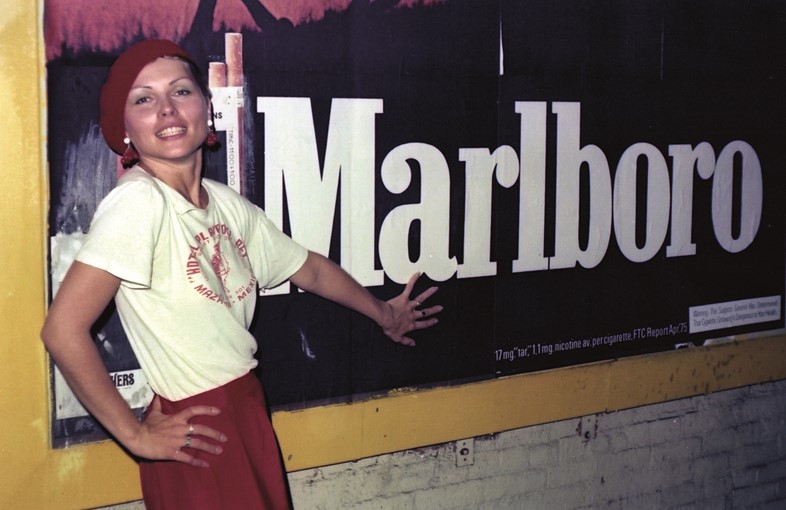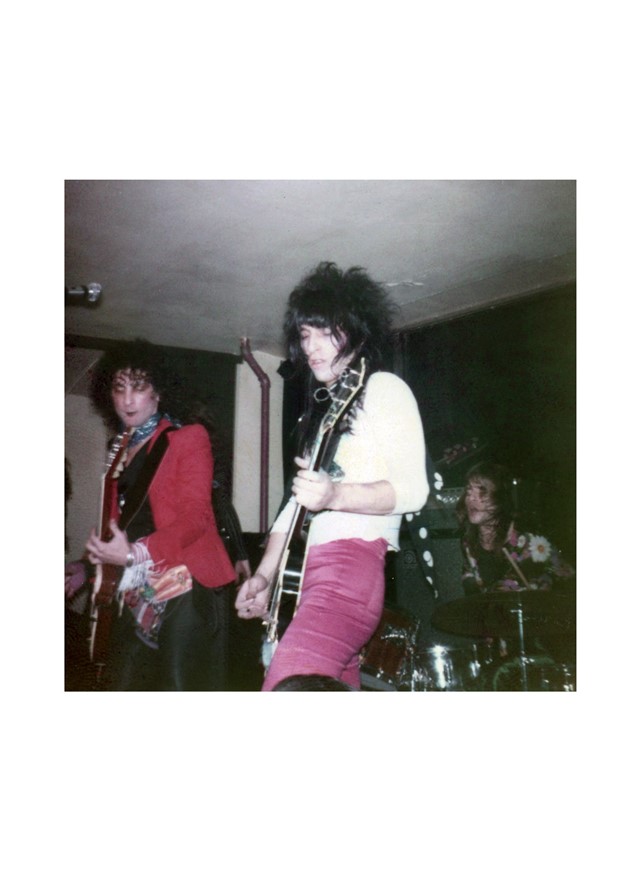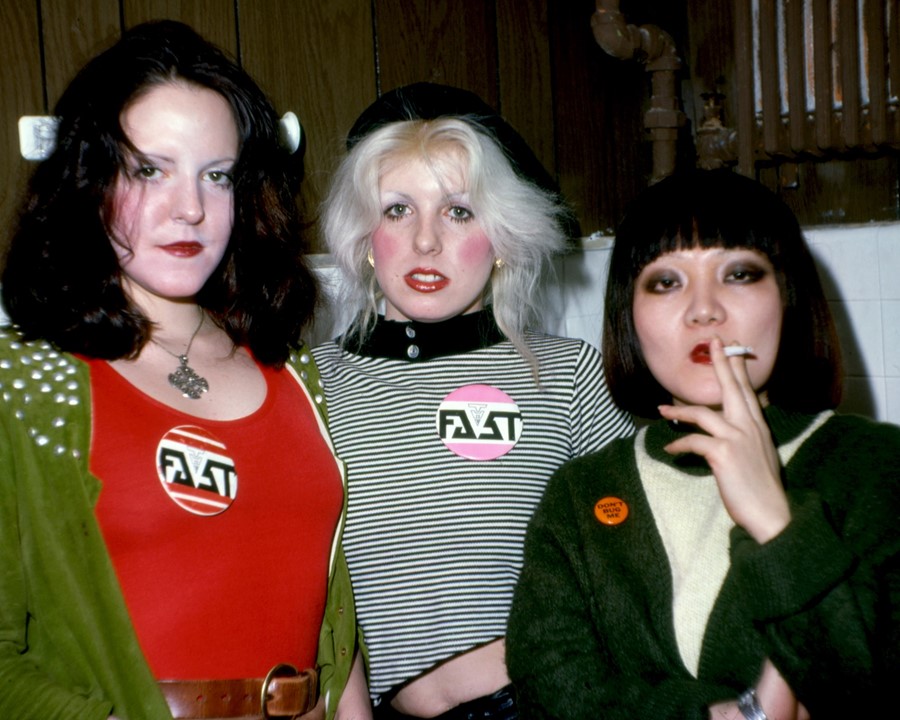Hitting New York’s legendary 1970s underground club scene at the age of 14 isn’t a lunchtime tale most highschool kids can vouch for – unless you were Paul Zone. Fast forward 40 years and Zone is a cultural photography master, shooting his 'mates' Patti Smith, Iggy and the Stooges, T-Rex, Lydia Lunch, Stephen Sprouse and anyone and everyone who was setting the musical and cultural agenda in New York as rock n' roll took the world by storm. “All that was going through my head was having fun as a teenager just like any teenager would on spring break or waiting for the weekend to come. None of these people were icons whatsoever they were just my friends hanging out in clubs or going to bars or jumping on stage and playing with their new formed bands,” he recalls.
His book Playground: Growing Up in the New York Underground provides a candid look into clubs like Max's Kansas City, Mercer Arts Center, Club 82, and CBGB during New York's Glam Rock era, slipping behind the red-roped scenes that groupies, wannabes and girls and boys around the world could only dream of. A member of NY rock outfit The Fast himself, alongside his brothers, Zone captured the hazy nights of his contemporaries on 'cheap cameras' that, until a decade ago, were hidden in storage boxes – now published for the world to see.
In celebration of the book's latest publication, Zone harks back to one of the first nights that he encountered the underground scene, via the New York Dolls, with this flashback:
“After seeing the intriguing ad in the Village Voice we were excited to head into New York to find out what the New York Dolls were all about. We went to concerts in the city every week, but outside of cover acts at talent shows, we’d never seen a band that didn't have a record out. We couldn’t make it to the Diplomat for some reason, but two weeks later we caught them at the first night of their residency at the Mercer Arts Center. Our first descent into the underground was not only thrilling…it was a revelation. At big shows during the dirty jeans/post-Woodstock era, my brothers and I would be part of a scattered handful of people making a statement by dressing flamboyantly like our favourite British acts. Walking into the Mercer Arts Center and seeing everyone dressed like us was like a religious awakening. We instantly knew that we had found the place we wanted to be and the people we wanted to be around. The outlandishly attired, relentlessly denigrated, perpetual oddball Zone brothers finally fit in!
The Mercer was 35,000 square feet of Greenwich Village real estate, housed in the old Broadway Central Hotel, and broken up into theaters that mostly hosted plays that regular people might attend, like Rip Torn as Macbeth, or One Flew Over the Cuckoo’s Nest. There was a piano cabaret called the Blue Room for theatergoers to grab a drink and a space for experimental film/video and avant-garde music in the kitchen (which evolved into the Kitchen, an arts space that still exists on West 19th street). But for us the Mercer was about something else, thanks to dancer/actor/musician/artist/Warhol star Eric Emerson, whose band, the Magic Tramps, brought outrageous rock n’ roll performances to the Oscar Wilde Room, and soon introduced the Dolls as their opening act. The Center opened in December 71, and closed when the Broadway Central collapsed on August 3, 1973, but in that brief window it was the capital of the underground.
“We loved the bizarre, experimental Magic Tramps, the boisterous, gender-bending Wayne County, the abrasive, minimalistic Suicide, and the theatrical, naughty Ruby and the Rednecks. But none of them could compete with the Dolls” – Paul Zone
We saw the Dolls at the Mercer every Tuesday for months, and were introduced to the kaleidoscopic swirl of artists that made up the pre-punk New York underground. We loved the bizarre, experimental Magic Tramps, the boisterous, gender-bending Wayne County, the abrasive, minimalistic Suicide, and the theatrical, naughty Ruby and the Rednecks. But none of them could compete with the Dolls. The fashion and the moves and the attitude David Johansen, Johnny Thunders, Sylvain Sylvain, Arthur Kane and Billy Murcia brought to the stage were like nothing we’d ever seen. Even if guitarists Thunders and Sylvain were playing second-hand blues riffs, somehow they made it all seemed fresh and new. The band had an amazing vision and their early audiences loved them deeply. We caught them at the Mercer, the Diplomat, Coventry in Queens…we’d follow them anywhere. We quickly came to know everyone in the bands, and everyone in the audience (it was a tiny scene back then). That summer was a turning point for us, a brief window of time that set the course for the rest of our lives.
In October the Dolls went to London to open for Rod Stewart, where Billy, their drummer, asphyxiated in a bathtub after overdosing. Undeterred, the Dolls returned to the Mercer on December 19, starting their set with Chuck Berry’s “Back in the U.S.A.” Suzi Quatro’s drummer Jerry Nolan took Murcia’s seat, and Thunders looked amazing in his girlfriend Janis Cafasso’s black monkey fur coat.
The Dolls’ shows got bigger and more exciting from then on, peaking with their New Year's Eve concert at the Mercer with Ruby and the Rednecks, the Magic Tramps, Jonathan Richman’s Modern Lovers, and Wayne County. Inspired by that magical night my brothers and I made a New Year’s resolution. 1973 would be the year that The Fast become a part of the New York glitter scene.”
Playground: Growing Up in New York Underground is available now, published by Glitterati Incorporated




